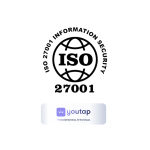Introduction.
FinTech is the world’s fastest-growing industry with no signs of abatement. The sector has brought unprecedented development and innovation to a traditionally conventional, conservative, staid industry. [It] grows with alacrity, spurred on by a burgeoning start-up ecosystem with an ever-evolving digitalized and virtual base supported by a strengthened infrastructure. This growth and increased market presence can partially be attributed to the intensification of Smartphone activity and accessibility. This unrestricted usage has blurred historical socioeconomic demographics and geographies.
From a global perspective, the [FinTech] industry has been pushed by governments and [their] associated agencies to implement a system called the Unified Payments Interface (UPI) and [their] related software and technologies. These intersected systems are significant catalysts driving FinTech’s expansion and exclusivity.
This unparalleled advancement, development, and innovation of software and technology in the industry have created many issues for the collective FinTech industry, with some needing immediate attention. These issues include compliance, cybersecurity, and regulatory legislation. Of greater urgency is the unbanked and underbanked, their complex needs compounded by insufficient industry collaboration and coordination, unbundling, and a perpetual lack of government involvement and support. These concerns have heightened an industry already affected by its rapid transformations occurring throughout [its] ecosystem.
Defining the [regulatory] sandbox in the lexicon of FinTech.
The FinTech industry is surrounded by answers to questions that [endlessly] emerge from the sector’s ongoing advancements, developments, and innovations. One-on-trend development is a solution to compliance and regulatory barriers that plague the industry, the [regulatory] sandbox.
Regulatory sandboxes are immensely beneficial to the FinTech ecosystem, although their effectiveness, influence, and significance have yet to be empirically proven. Nonetheless, it is known throughout the industry that [regulatory] sandboxes [do] positively affect FinTech growth, particularly in an environment where compliance and financial regulations often hinder the [venture] investment of capitalization critical towards procuring [venture] capital, particularly in today’s uncertain economy.
Removing these legislative compliance and regulatory restrictions alleviates the uncertainty that [they] bring to the FinTech industry so that, in moving forward, regulatory sandboxes are becoming de riggeur. [They] are more of an inclusive benefit ameliorating the banking and financial sector’s landscape than an addition that is just [another] underwhelming innovation, advanced and developed behind the scenes.
What is a [regulatory] sandbox?
The lexis of the FinTech industry continues to expand with a concordance of often confusing acronyms and verbosity. Acronyms are often double entendres, their duality particular within the -as-a-Service vernacular.
In layperson’s terms.
In layperson’s terms, a [regulatory] sandbox is an Information Technology (IT) concept. However, this oversimplifies the actual role of the [regulatory] sandbox in the FinTech industry.
The [regulatory] sandbox is a type of live testing of banking and financial products and services developed by the [FinTech] industry. The sandbox is a resource-intensive exercise that requires many full-time employees who formulate evidence-based policies and products, creating more ways to engage with the marketplace. The [emerging] products and services are tested in an environment where the database is isolated from critical system resources. The products and services are not live, and no data is damaged.
Moreover, the [regulatory] sandbox allows banks, financial service providers, innovators, and regulators to conduct evidence-based assessments of their products and services, benefits, and risks, enhancing institutional commitment to the FinTech industry.
A 2000s example.
A prime example of this is the development of the mobile wallet in the 2000s. In the aftermath of the telecommunications industry boom, the development of mobile phones occurred in a grey space. In this space, banks and financial institutions issued guidelines for their operations. For example, they limited the amount of money to be stored in the wallets, circumventing any risk potential that [the] wallets could have posed.
A modern twist.
Fast forward to the situation today. Today, the [regulatory] sandbox can recast the geography of the FinTech industry. The landscape leverages [new] technology to quickly meet the needs of a convenient, cost-effective, secure, and transparent system. The sector benefits from regulatory guidance, helping innovators navigate the legal complexities and regulatory requirements governing the banking and financial sectors. They offer many opportunities to achieve this, for example, by eliminating legal uncertainty through streamlined authorization.
There is always a “however”!
The decision, however, to set up a [regulatory] sandbox must be consulted throughout the industry to prove [its] effectiveness and efficiency. The sandbox must be more agile to absorb some of the industry’s disruption. Moreover, the [sandboxes] objective(s) must be pre-determined to avoid [any] disparity between [the] regulators’ motive and any subsequent legal mandate.
Ultimately, the driving factor must be the key motivator in the marketplace to set up the [regulatory] sandbox, although the regulators’ legal ruling may not.
FinTech’s reaction to the introduction of regulation.
Few industries can compare with, let alone compete with, the remarkable increases in advancement, development, and innovations of the FinTech industry. The increases in the number of products and services that the industry is generating are interconnected and hurriedly ushered into the marketplace while normalizing their presence. These industry advancements, developments, and innovations have benefited the user; however, [they] have been a collective challenge for the regulator.
A challenge for the regulatory introduction.
In part, the regulatory introduction of sandboxes has parallelled the pace of innovation and product design throughout the FinTech industry as they consolidate their influence and increase domination in globalized economics. As a result of this, regulators face the challenge of being able to guarantee the Rights of the Consumer. Fortunately for the consumer, the FinTech industry and regulators have addressed issues from compliance and regulation with software and technological developments and innovations.
An answer to the challenge.
As new and emerging applications and innovations continue to enter the marketplace, regulators have developed creative measures to test their impact before they go to full-scale product and service development, production, and marketing. Evaluating the impact of these applications on a more negligible scale assist in determining their effects, subsequently enabling the necessary actions required for compliance and regulatory frameworks to protect [their] products, services, and the consumer, an essential process for application developers, consumers, and regulators.
The [regulatory] challenge: keeping up with innovation.
Usually, when considering challenges and innovation, the considered response would be to encourage it, foster it, and nurture ideas and inventions as concepts and designs are cultivated and developed.
The mantra (of innovation).
FinTech companies have adopted innovation as their mantra. However, in this immediacy technological and socioeconomic environment, there seems to be a glut of innovation and ideas. It is an environment where everyone wants instant results, an atmosphere where products and services need to be delivered first to an insatiable, cutthroat marketplace. Compliance and regulation are forced and rushed, the resultant industry intonation and refrain one of tiredness, a fatigue borne of being driven to produce innovation instantly to satisfy fickle consumers. FinTech [conveniently] forgets the human side of innovation and regulation because of the dominance of digitalization and virtuality.
The conclusion of [regulatory] sandboxes … and Youtap.
[Regulatory] sandboxes have emerged as an innovative, invaluable regulatory mechanism that promotes FinTech innovation while managing risks. Sandboxes offer many benefits, including facilitating innovation, faster time-to-market, improved consumer protection, and collaboration between regulators and FinTech firms. However, [regulatory] sandboxes also face several challenges, including a limited scope, regulatory uncertainty, an uneven playing field, and restricted duration. Regulators must address these challenges to ensure that sandboxes continue to foster innovation and promote consumer protection in the FinTech sector.
As an established innovative FinTech, Youtap has coordinated with the VISA DPS program. This process has ensured that Apple Pay and tokenization payments comply with the emerging global standard for foreign exchanges. With Youtaps’ invitation to access the VISA DPS sandbox, they are at an advantage over their competitors because this [sandbox] gives them early marketplace adoption across major payment innovations, such as tokenization, Tap to Pay, and digital issuance.
The FinTech sector will continue to advance, develop, and innovate software and technology as the marketplace demands increase. Knowing that Youtap has partnered with VISA DPS is a reassurance and affirmation that the company is an industry leader, moving forward, parallel to digitalization, tokenization, and virtuality.

